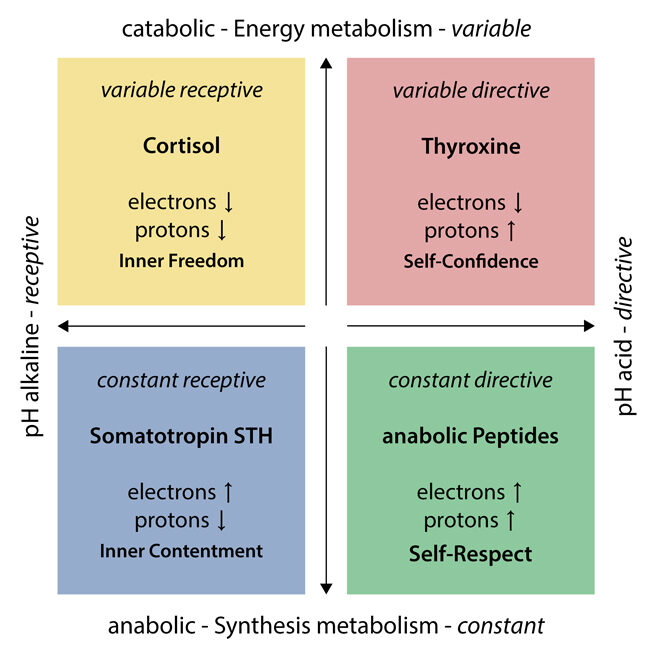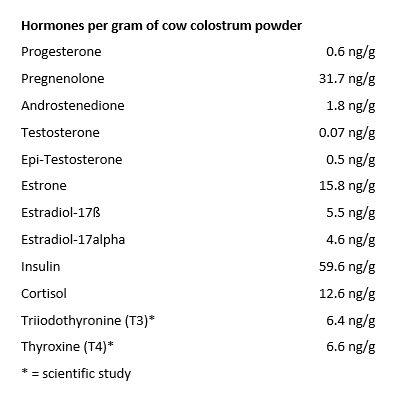Basic Cell Metabolism Regulation

The scientific basis for the basic regulation of cell metabolism was developed by Prof. Dr. Dr. Jürgen Schole and Prof. Dr. med. Wolfgang Lutz and published in 1987 in their book: Regulatory Diseases. They show that for this basic regulation, at least three main metabolic hormones must act simultaneously
- the thyroid hormones T3 and T4, as well as cortisol on the catabolic side
- Somatotrophin (STH) and cell-specific peptides on the anabolic side.
The diagram on the left shows the basic regulators at the level of the main metabolic hormones..
To ensure optimal health, the metabolism regulation must be able to react swiftly to any influence and ensure a dynamic balance between the anabolic and the catabolic processes. This is achieved with the aid of the redox potential, which is to be understood as the ratio between electrons and protons.
It is the great achievement of Bodo Köhler, MD, who integrated this law of basic regulation of cellular metabolism into Prof. Dr. Max Lüscher's four-pole categorical order system. This scheme of Life-Conforming Medicine (LCM) is applied in practice for diagnosis and therapy.

The anabolic synthesis metabolism in the cytosol and the catabolic energy metabolism in the mitochondria are intertwined and jointly provide the prerequisite for a balanced basic regulation. This is basically regulated by oxidation and reduction processes, whereby electrons are exchanged. Specifically, the cell membrane requires a voltage of -70 to -90 mV (millivolts) to be able to ensure this exchange - this basic regulation.
This universal law is valid at all levels:
- from the psychic-emotional state of min
- via the metabolism of the individual cell and its environment,
- to the physical condition of the body.
As colostrum contains, among other things, cortisol, thyroxine, and various anabolic peptides (growth factors), it can significantly influence the basic regulation. In the list below you can observe the content of hormones in QuraDea wholesome cow colostrum powder. In our opinion, they play a key role in the interaction of the many immune factors.